Introduction
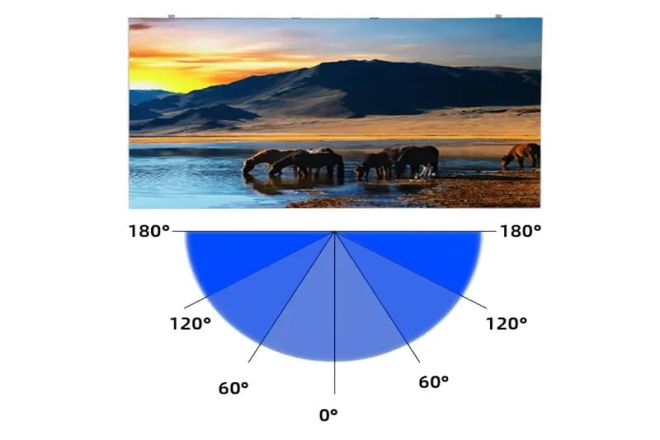
Au centre d'une place animée, entouré d'une foule dense, votre Affichage LED tente d'attirer l'attention de tous. Mais avez-vous déjà remarqué qu'à mesure que le public se déplace, la couleur et la clarté de l'écran semblent changer silencieusement ? Derrière cela se cache le secret de l'optimisation de l'angle de vision des écrans LED.
Pourquoi certains écrans restent-ils clairs quel que soit l'angle sous lequel vous les regardez, alors que d'autres ne le sont pas ? Comment faire en sorte que votre écran LED se démarque et devienne le centre d'attention sur un marché hautement concurrentiel ? La réponse réside dans les techniques de angle de vue optimisation.
1. Quels sont les angles de vision des écrans d’affichage LED ?
Les angles de vision des écrans d'affichage LED ne sont pas principalement définis par une classification directe telle que « angle de vision étroit, angle de vision moyen, angle de vision large et angle de vision ultra large », mais sont davantage liés à leur environnement d'installation, à leur objectif et à leurs paramètres techniques spécifiques.
Cependant, en réponse à votre classification, je peux essayer de faire une classification générale de l'angle de vision des écrans LED en fonction de la compréhension générale et des plages de paramètres techniques :
- Affichage LED à angle de vision étroit :
Ce type d'écran présente un angle de vision relativement petit dans les directions horizontale et verticale et convient généralement aux occasions où la plage de vision doit être contrôlée ou où le regard latéral est empêché, comme lors de réunions confidentielles, de guichets bancaires, etc.
Il convient toutefois de noter que tous les écrans LED ne sont pas dotés d'un « angle de vision étroit » clair. Cette classification est davantage basée sur une compréhension des scénarios d'application et des paramètres techniques. L'angle de vision peut être inférieur à 100°.
- Affichage LED à angle de vision moyen :
Ce type d'affichage se situe entre un angle de vision étroit et un angle de vision large en termes d'angle de vision. Il convient aux écrans commerciaux généraux, activités intérieures, et d'autres occasions, et peut offrir une expérience de visionnement relativement équilibrée. L'angle de vision est compris entre 100° et 140° environ.
- Affichage LED à grand angle de vision :
Ce type d'écran offre un grand angle de vision et peut maintenir la clarté de l'image et la précision des couleurs sur une large plage. Il convient aux événements à grande échelle, opublicité extérieure, stades, et d'autres occasions qui nécessitent une couverture d'audience plus large. L'angle de vision est généralement supérieur à 140°, et certains produits haut de gamme peuvent même atteindre 160° ou plus.
- Écran LED à angle de vision ultra large (également appelé angle de vision panoramique, angle de vision complet, etc.) :
Ce type d'écran vise l'angle de vision ultime en matière de technologie, en s'efforçant de fournir d'excellents effets de vision sous n'importe quel angle. Cependant, il convient de noter que « l'angle de vision ultra large » n'est pas une norme technique ou une classification stricte, mais une description de produits avec des angles de vision extrêmement larges.
L'angle de vision est proche ou supérieur à 180°, mais il convient de noter qu'en raison de la structure physique et des caractéristiques optiques des écrans LED, obtenir un véritable angle de vision complet de 360° reste un défi technique.
2. Comment mesurer l'angle de vision des écrans LED
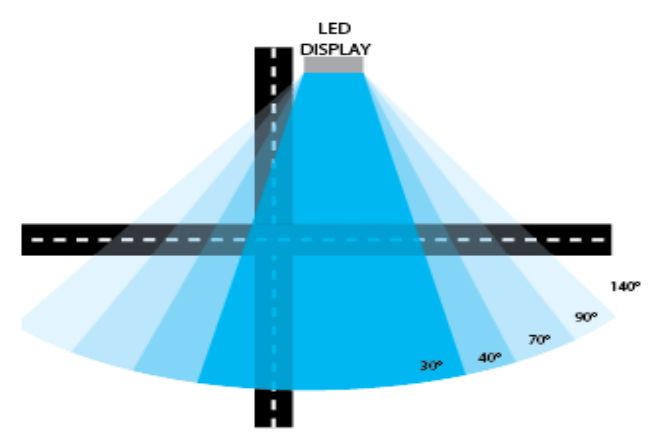
Imaginez que vous vous trouvez devant un écran LED diffusant des images ou des vidéos lumineuses. Vous souhaitez maintenant savoir sous quel angle l'écran peut rester clair et lumineux. C'est l'« angle de vision » que nous souhaitons mesurer.
1). Étapes de base pour mesurer l’angle de vision :
- Choisissez une couleur:
Tout d'abord, l'écran sera réglé pour n'afficher qu'une seule couleur (comme le rouge pur, le vert pur ou le bleu pur) et la luminosité sera réglée au maximum. Cela est dû au fait que nous souhaitons mesurer l'angle de vision de chaque couleur séparément.
- Trouver le point central :
Déterminez un point central sur l'écran, par exemple le milieu de l'écran. Ce point sera le point de départ de notre mesure.
- Mesurer l'angle de vision horizontal :
Placez-vous devant l’écran et utilisez un outil appelé « luminosimètre » ou « analyseur de couleurs » pour mesurer la luminosité du point central.
Ensuite, déplacez-vous lentement vers la gauche tout en observant la valeur affichée sur le luminomètre. Lorsque la luminosité tombe à la moitié de la valeur d'origine, arrêtez-vous et notez l'angle entre votre position actuelle et le point central. Il s'agit de l'angle de vision horizontal vers la gauche.
Ensuite, revenez au point central et déplacez-vous vers la droite, en répétant les étapes ci-dessus pour obtenir l’angle de vision horizontal vers la droite.
Enfin, le plus petit des deux angles est utilisé comme angle de vision horizontal de l’écran.
- Mesurer l'angle de vision vertical :
Cette étape est très similaire à la mesure de l'angle de vision horizontal, mais vous vous déplacez vers le haut et vers le bas au lieu de la gauche et de la droite. Là encore, vous devez trouver la position où la luminosité tombe de moitié et noter l'angle. Mesurez vers le haut et vers le bas, puis prenez le plus petit angle comme angle de vision vertical.
2). Remarques :
Lumière ambiante : essayez de mesurer dans un environnement plus sombre car une lumière ambiante trop vive peut affecter les résultats de mesure.
Précision de l'outil : Le luminomètre ou l'analyseur de couleurs utilisé doit être précis et fiable afin que des mesures précises puissent être obtenues.
Mesures multiples : Pour améliorer la précision, vous pouvez mesurer plusieurs fois puis prendre la moyenne.
3. Analyse des facteurs affectant l'angle de vision des écrans d'affichage LED
De nombreux facteurs influent sur l'angle de vision des écrans LED, qui déterminent ensemble l'effet de vision de l'écran sous différents angles. Voici une analyse détaillée des quatre aspects des caractéristiques de la puce LED, de la technologie de conditionnement, de la conception du module d'affichage, du système de contrôle et de l'entraînement :
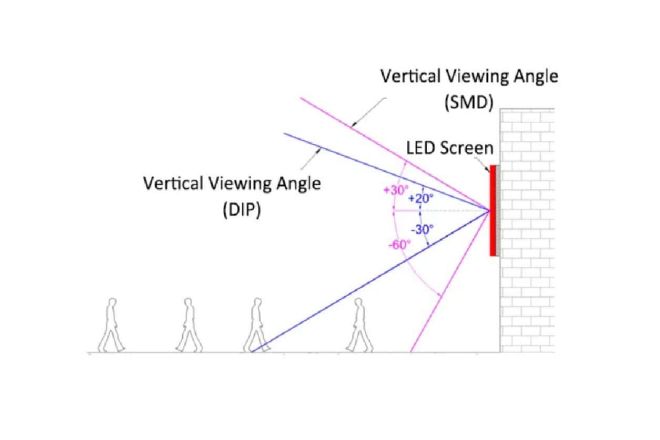
- Caractéristiques de la puce LED
L'angle de vision de la puce LED est l'un des facteurs importants qui déterminent l'angle de vision de l'écran d'affichage LED. L'angle de vision de la puce LED fait référence à la plage d'angle de distribution de la lumière lorsque la LED émet de la lumière.
Les puces LED avec différents angles de vision conviennent à différents scénarios d'application. Par exemple, la plupart des écrans d'affichage extérieurs utilisent des LED elliptiques avec un angle de vision horizontal de 100° et un angle de vision vertical de 50° pour garantir que des images claires peuvent être vues sur une plage plus large, tandis que les écrans d'affichage intérieurs peuvent utiliser des LED SMD avec un angle de vision horizontal et vertical de 120° pour offrir un angle de vision plus large.
De plus, la luminosité de la puce LED est également un facteur qui affecte l'angle de vision, car les puces LED à haute luminosité peuvent compenser dans une certaine mesure la perte de luminosité causée par la réduction de l'angle de vision.
- Technologie d'emballage
La technologie d'emballage a un impact direct sur l'angle de vision de l'écran LED. Différentes méthodes d'emballage provoqueront la diffusion de la lumière émise par la puce LED sous différents angles, affectant ainsi l'angle de vision de l'écran d'affichage.
Par exemple, les puces LED conditionnées avec CMS (technologie de montage en surface) ont généralement un angle de vision plus large car ils peuvent contrôler plus efficacement la direction de diffusion de la lumière. De plus, la transmission de la lumière et les performances de dissipation thermique du matériau d'emballage affecteront également l'angle de vision et les performances globales de l'écran LED.
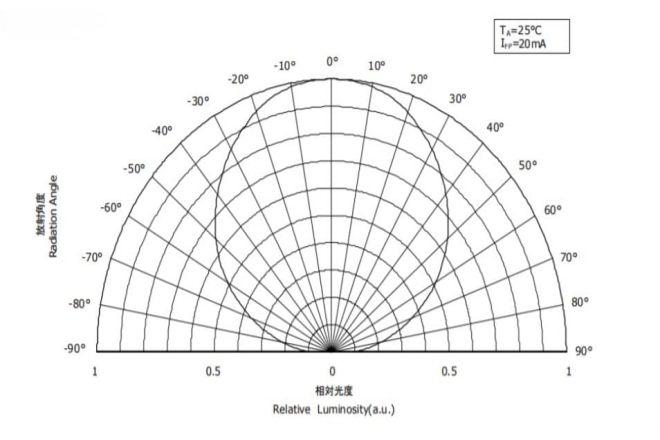
- Conception du module d'affichage
La conception du module d'affichage est également l'un des facteurs clés affectant l'angle de vision de l'écran LED. La disposition et l'espacement des perles de lampe LED dans le module et la méthode d'épissure entre les modules affecteront l'angle de vision de l'écran.
Une disposition et un espacement raisonnables des perles de lampe peuvent garantir que la lumière est répartie uniformément sous différents angles et améliorer l'angle de vision de l'écran.
En même temps, la précision de l'épissure entre les modules affectera également l'angle de vision global de l'écran. Si l'épissure est irrégulière ou présente des espaces, cela peut entraîner une dispersion ou une réflexion de la lumière dans ces zones, réduisant ainsi l'angle de vision de l'écran.
- Système de contrôle et d'entraînement
Bien que le système de contrôle et le lecteur ne déterminent pas directement l'angle de vision de l'écran LED, ils ont un impact important sur l'effet d'affichage et la stabilité de l'écran et affectent indirectement l'expérience de visionnage du public.
Le système de contrôle est chargé de recevoir des signaux externes et de les convertir en instructions que le circuit de commande peut comprendre pour contrôler la luminosité, la couleur et d'autres paramètres de l'écran LED. Des systèmes de contrôle et des circuits de commande de haute qualité peuvent garantir que l'écran d'affichage peut maintenir des effets d'affichage stables et une reproduction des couleurs sous différents angles.
De plus, le système de contrôle peut également équilibrer la relation entre l'angle de vision et la luminosité en ajustant la luminosité de la puce LED pour obtenir le meilleur effet de vision.
4. Étapes pour optimiser l'angle de vision de l'écran LED
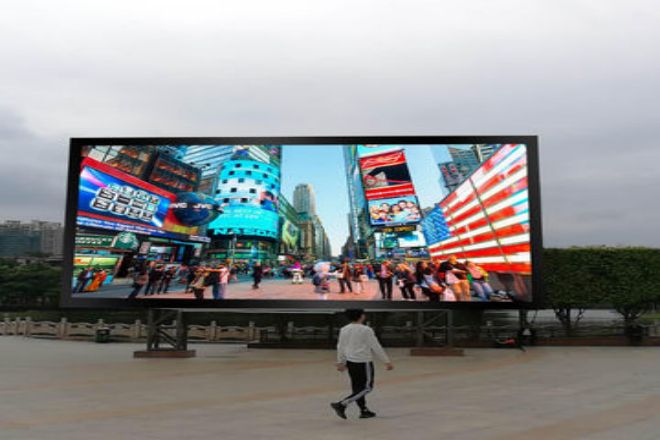
Les étapes permettant d’optimiser l’angle de vision de l’écran LED sont un processus complet impliquant des ajustements et des améliorations dans de nombreux aspects.
1). Optimiser les puces LED et le packaging.
Choisissez des puces LED à angle de vision élevé : selon les besoins réels, sélectionnez des puces LED avec des angles de vision plus larges, telles que des puces avec des angles horizontaux et verticaux de 120° ou plus.
Améliorer la technologie d'emballage : utiliser une technologie d'emballage avancée, telle que l'emballage par lentille, pour améliorer la direction de diffusion de la lumière de la puce LED et augmenter l'angle de vision.
2). Ajustez la conception du module d’affichage.
Optimisez la disposition des billes de lampe : ajustez la disposition des billes de lampe LED dans le module pour rendre la distribution de la lumière plus uniforme et améliorer la cohérence de l'angle de vision.
Réduisez la distance entre les perles de lampe : sans affecter la dissipation thermique et le coût, réduisez de manière appropriée la distance entre les perles de lampe pour augmenter la densité de pixels par unité de surface, améliorant ainsi l'effet d'angle de vision.
Améliorer l'épissure des modules : assurer la planéité et la précision de l'épissure entre les modules pour éviter les problèmes de diffusion et de réflexion de la lumière causés par une épissure inégale.
3). Réglez le système de contrôle et conduisez.
Optimiser le circuit de pilotage : En fonction des besoins réels et des caractéristiques de l'écran d'affichage, ajustez les paramètres du circuit de pilotage pour garantir que la puce LED puisse obtenir une alimentation en courant et en tension stable sous différents angles.
Améliorer le système de contrôle : utilisez des systèmes de contrôle avancés pour améliorer la vitesse de transmission et la stabilité des signaux et réduire la perte d'angle de vision causée par des problèmes de transmission du signal.
4). Appliquer la technologie d’optimisation de l’angle de vision.
Utiliser un film d'optimisation de l'angle de vue :
Fixez le film d'optimisation de l'angle de vision sur la surface de l'écran d'affichage pour améliorer l'angle de vision et la cohérence des couleurs de l'écran d'affichage en modifiant le chemin de propagation et les caractéristiques de distribution de la lumière.
Le film d'optimisation de l'angle de vision peut obtenir une distribution uniforme de l'angle de vision des lumières LED de différentes couleurs et éliminer les différences d'angle de vision gauche et droite et les différences d'angle de vision entre différents pixels.
Ajuster le contenu de l'affichage :
Selon les caractéristiques et l'angle de vision de l'écran d'affichage, ajustez la luminosité, le contraste, la couleur et d'autres paramètres du contenu de l'affichage pour obtenir de meilleurs effets visuels.
Conclusion
Au travers de la discussion de cet article, il n'est pas difficile de constater que l'optimisation de l'angle de vision des écrans LED est un sujet complet impliquant plusieurs niveaux tels que la technologie, la conception et l'application. Il ne s'agit pas seulement de mises à niveau et de rénovations matérielles, mais également d'une compréhension approfondie et d'une compréhension précise des scénarios d'application.
Enfin, si vous souhaitez en savoir plus sur les écrans LED, veuillez nous contacter.
